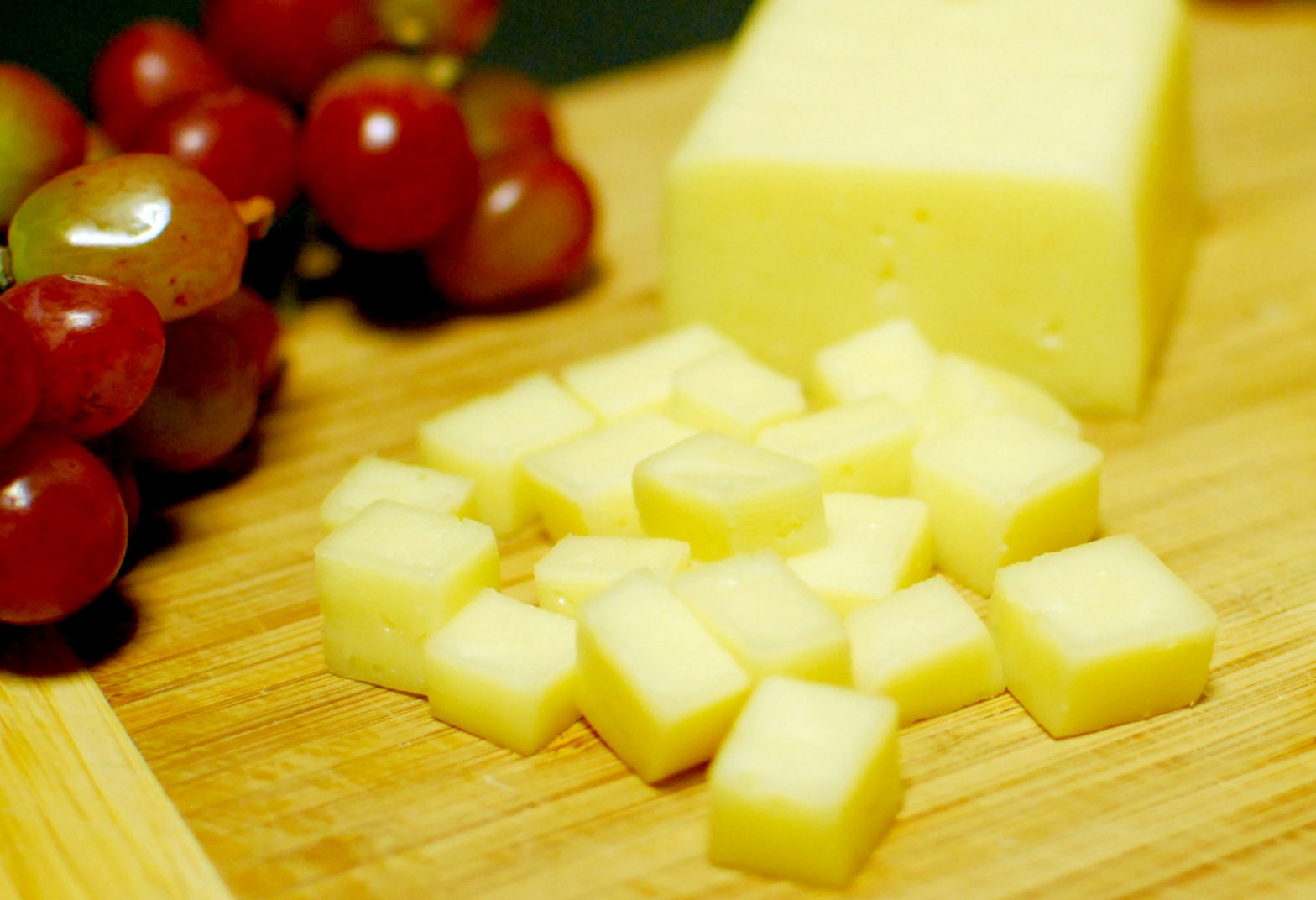The results from a previous regular vs. reduced fat cheese taste taste were so encouraging, that I have decided to do another one. This time, I have decided to make it an even closer comparison by sticking to the same brand and the same type of cheese so that it’s even a closer comparison.
For this taste test we sampled the following cheeses:
Dofino creamy havarti (35% M.F)
Dofino 25% less fat havarti cheese (23% M.F)
My Thoughts:
If this taste test is anything like the other taste test, I think that both cheese will taste very similar and that the taste testers won’t be able tell a big difference. I think that they will be able to tell a difference from the texture in that the reduced fat cheese will be a little firmer.
Taste testers:
Please try each of the cheeses and comment on taste, appearance and which one you like more.
Would you choose one over the other for the health benefits of having a lower fat cheese?
The Reveal:
Thank you everyone for submitting your comments. Here are the results:
Cheese A: Dofino Creamy Havarti
Cheese B: Dofino 25% Less Fat Havarti
Some interesting points:
When both cheese were just taken out of the fridge (and still cold), the flavour of the creamy havarti was sharper and more pronounced compared to the 25% less fat version. However, when both cheeses were brought up to room temperature the opposite was true (the regular havarti had a more subdued flavour and the lower fat cheese had a sharper taste). However, most people agreed that the texture was noticeably different between the two cheeses with the creamy havarti being a lot creamier.
When I looked on the label, it’s a difference of 3g fat per serving between the two cheeses (11g fat vs. 8 grams) but only a difference of 20 calories between the regular and reduced fat version (120 calories vs. 100 calories respectively). 1 serving = 3cm cube
One thing to note about reduced fat cheeses: Just because they are labeled reduced fat doesn’t necessarily mean they are low fat (or low calorie). Reduced fat simply means that the product contains 25% less fat than the original version (and is for the most part, a relative statement). Low fat, on the other hand, means a product contains 3g of fat or less per serving and 30% or less of total calories.
So even though you’re saving on some fat grams, eating the reduced fat version doesn’t give you permission to eat a lot more of it (since it’s only a difference of 20 calories/serving). You can save on some of the fat grams over time (especially if you’re at an event where there is quite a bit of cheese). However, if you’re watching your weight it’s best to limit your intake of cheese overall.


A – was creamy, had more flavour and a bite to it (tarty), and definitely more tastier
B – was harder in texture (rubbery)and not as tasty or tarty
Cheese B was far and a way better than cheese A. I preferred the texture of cheese B as it was more firm and the taste was more enjoyable as well. Cheese A's texture was more creamy and not as enjoyable. The flavor was also a little more overwhelming.
Well, I think that A is the full fat and B is the reduced fat.
A tastes creamy and really just melted in my mouth. B was firmer and required a bit more chewing. Both were delicious. I think it's worth it to choose the low fat and save some fat and calories.
Taste: I could not really tell the difference between the taste. Cheese B was somewhat stronger but it was a very subtle difference between the two.
Appearance: Both were very similar. Cheese B was a little darker.
Which one you like more: I liked cheese B more because of the texture. It was a little harder than cheese A.
Based on all of these similarities I would choose the lower fat one because there was not a significant taste difference to me.
A – regular
B – lower fat because it is firmer
Taste and appearance is very similar. I like A better because of the texture.
wow … very interesting because both cheeses are so different in terms of texture and taste!
Cheese A : nice color, very soft and mild taste
Cheese B : nice color, firm but bolder taste
I love Cheese A texture but prefers the taste of Cheese B. Hmmm .. I think Cheese A is the light and Cheese B is the regular.
Maybe that's a case where "Light" not only refers to %MF but also to texture and/or taste! Can't wait for the reveal!
Thanks for the taste test Lisa!
I thought that the two cheeses were very different. Cheese A had a rubbery texture, less flavour and a shinier appearance. Cheese B was quite flavourful. I would guess that Cheese A was low fat and Cheese B was regular. I probably wouldn't buy the low fat because if I am going to go out and buy cheese then I want the good stuff! Thanks for the great taste test!
A: soft, very creamy; shiny look – higher fat.
B: firmer, less creamy – gotta be lower fat. Definitely acceptable. They both have similar tastes. And in most cases, enjoyed with crackers or fruit. I definitely love the creaminess of the higher fat one though 🙂
Cheese A: Definitely softer. More creamy. Flavour is more subdued. I think this is due to the higher fat content.
Cheese B: This one is firmer with a more sharp taste. I think this one is the lower fat variety.
I think the low fat version is cheese B but I actually like this one more because I like cheeses that have a firmer texture. I found cheese A to be a little too soft. I would definitely switch to the low fat version as it doesn't seem like it's too much of a compromise (provided the cost isn't that much more).
Definitely love Cheese A better, and I think this is the 'regular' one. It is soft, easier to spread on a cracker and creamier in texture.
Cheese B is firmer, not as easy to spread, and doesn't melt in my mouth. Out of the fridge it's almost plasticky in consistency. definitely like A better.
Also- both cheeses taste better after sitting at room temperature, so there's a lot to be said for cheese experts who advise to let their cheese 'rest'! Just like good meats and wine I guess! 🙂
This was a tough one for me. Cheese A had a more complex flavor and the texture was firmer. Cheese B (BIG PIECE!) had a creamier texture and a more subtle flavor, but it felt a tad rubbery. I'll go against the grain and say cheese A was the low fat.
Ok, so why would you eat a lower fat cheese? High fat all the way!